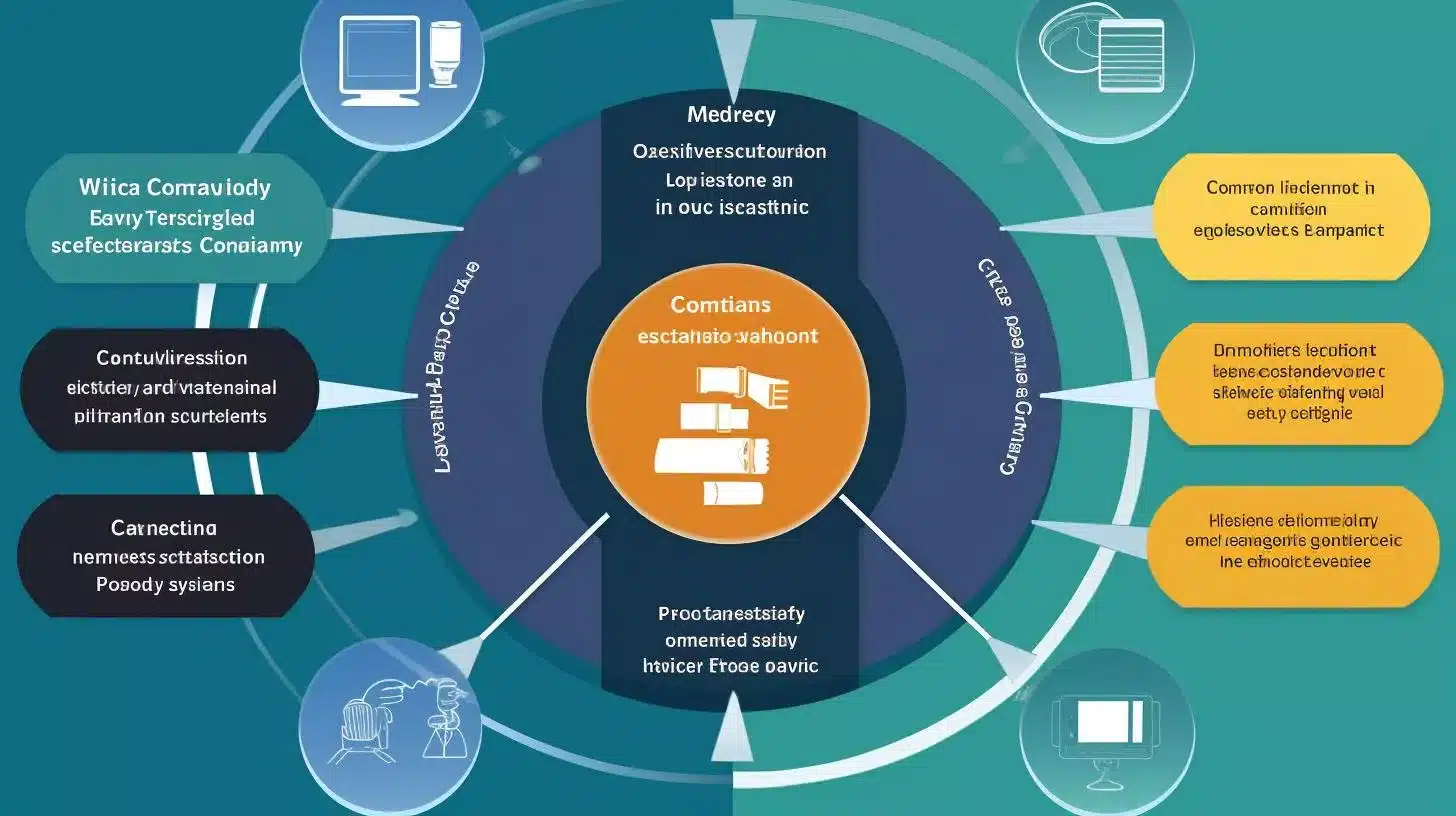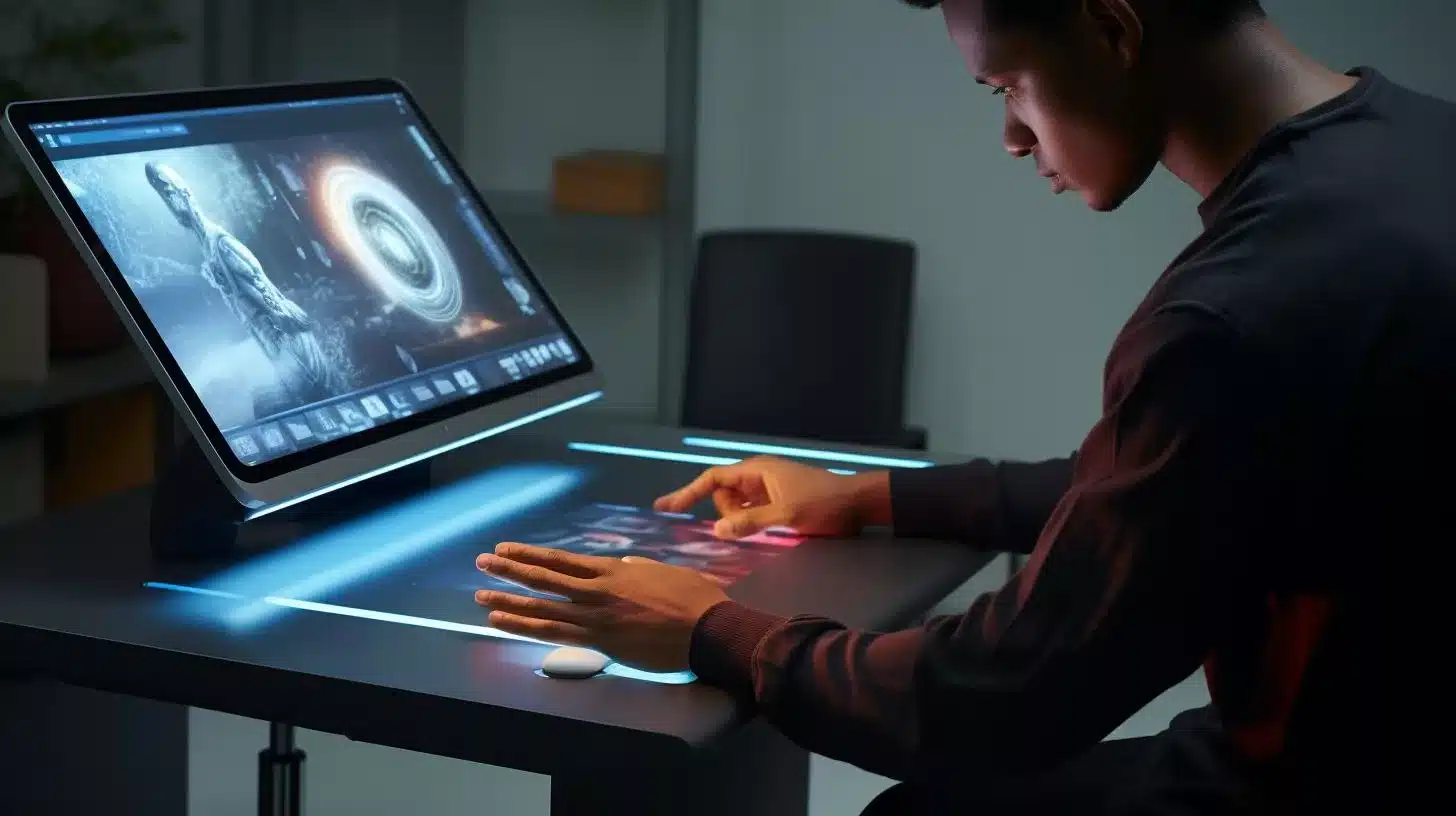Do you know what accessibility in technology means? It refers to the design of technology that can be used by individuals with disabilities, making it more inclusive for all. The importance of accessibility in technology cannot be overstated. In this article, we will discuss why accessibility in technology is essential, specific accessibility guidelines and standards, examples of accessible technology, and how it benefits individuals with disabilities.
What you’ll learn:
- The significance of accessibility in technology for creating an inclusive future.
- The challenges faced by people with disabilities in accessing technology.
- The ways in which technology can be made more accessible.
1. The article highlights the importance of accessibility in technology for creating a more inclusive future.
2. It discusses the various challenges faced by people with disabilities in accessing technology, such as physical, cognitive, and sensory barriers.
3. The article provides insights into the different ways in which technology can be made more accessible, including the use of assistive technologies, accessible design principles, and user testing with people with disabilities.
The Importance of Accessibility in Technology
Accessibility in technology is crucial for individuals with disabilities to participate fully in society. It ensures that they have equal access to educational, employment, and social opportunities. Accessibility in technology also benefits organizations by improving productivity, reducing costs, and enhancing the customer experience.

Accessibility Guidelines and Standards
To ensure accessibility in technology, organizations should follow specific accessibility guidelines and standards. One such standard is the Web Content Accessibility Guidelines (WCAG) 2.1. WCAG provides a set of guidelines for creating accessible websites, including providing alternative text for images, captions for videos, and proper heading structure. Other guidelines and standards include the Section 508 Standards for Electronic and Information Technology, the Accessible Rich Internet Applications (ARIA) specification, and the Authoring Tool Accessibility Guidelines (ATAG).
| Type of Accessible Technology | Description |
|---|---|
| Screen Readers | Software that reads out loud the text that appears on a computer screen. It allows individuals with visual impairments to access digital content. |
| Text-to-Speech Software | Converts written text into spoken words, allowing individuals with visual impairments or reading difficulties to access digital content. |
| Speech Recognition Software | Allows individuals with physical disabilities to control their computer using their voice. It also enables individuals who have difficulty typing to use their voice to input text. |
| Closed Captions | Provides a text-based version of the audio content, making it accessible to individuals who are deaf or hard of hearing. It also benefits individuals who prefer to watch videos without sound. |
| Voice Commands | Allows individuals to interact with technology through voice commands, making it accessible to individuals with physical disabilities. |
| Magnification Options | Allows individuals with visual impairments to increase the size of the text and images on their screen. |
| Haptic Feedback | Provides tactile feedback, such as vibrations, to indicate incoming notifications or alerts. It benefits individuals with hearing impairments or who prefer not to use sound. |

Examples of Accessible Technology
Accessible technology can take many forms, from assistive technology to built-in accessibility features. Assistive technology includes screen readers, text-to-speech software, and speech recognition software. Built-in accessibility features include closed captions, voice commands, and magnification options. One example of accessible technology is the Apple Watch, which includes features such as haptic feedback, voice recognition, and a built-in screen reader. Another example is the Amazon Echo, which allows individuals with disabilities to control their home environment through voice commands.
Benefits of Accessible Technology
Accessible technology benefits individuals with disabilities by providing them with equal access to technology, allowing them to participate fully in society. It also benefits organizations by improving productivity, reducing costs, and enhancing the customer experience. For example, closed captions on videos not only benefit individuals who are deaf or hard of hearing but also benefit individuals who prefer to watch videos without sound. This increases engagement with the content and improves the user experience for all.
Personal Story: Overcoming Barriers to Accessibility
When I was in college, I had a friend named Sarah who was visually impaired. She relied heavily on technology to access her coursework and keep up with her studies. However, she often encountered barriers to accessibility when using certain software or websites.
One particular instance that stands out in my memory is when Sarah was trying to access an online textbook for a class we were taking together. The website was not compatible with her screen reader software, making it nearly impossible for her to read the material. She had to rely on someone else to read the textbook to her, which was time-consuming and not always feasible.
This experience opened my eyes to the importance of accessibility in technology. It’s not just about making things easier for people with disabilities, it’s about ensuring that everyone has equal access to information and resources.
Since then, I have made a conscious effort to design and develop technology with accessibility in mind. It’s a small step towards a more inclusive future, but it’s a step in the right direction.
Personal Perspective on Accessibility in Technology
It is essential to understand the personal perspective on accessibility in technology. According to the CDC, one in four adults in the United States has a disability. This means that accessibility in technology is not only essential but also affects a significant portion of the population. For individuals with disabilities, accessibility in technology means having the same opportunities as everyone else. It means being able to access educational materials, apply for jobs, and participate in social activities. Without access to technology, individuals with disabilities would be left behind in an increasingly digital world.
Conclusion
Accessibility in technology is critical for creating a more inclusive future for individuals with disabilities and society as a whole. It benefits everyone by providing equal access to technology, improving productivity, reducing costs, and enhancing the user experience. To ensure accessibility in technology, organizations must follow specific accessibility guidelines and standards, such as WCAG. By prioritizing accessibility in technology, we can create a more equitable society where everyone has the same opportunities.
Questions
What is accessibility in technology?
Accessibility in technology refers to designing tech that can be used by people with disabilities.
Who benefits from accessible technology?
Everyone benefits from accessible technology, but it is especially important for people with disabilities.
How can technology be made more accessible?
Technology can be made more accessible by incorporating features like text-to-speech and closed captioning.
What if accessible technology is too expensive?
While accessible technology can be more expensive, there are often free or low-cost alternatives available.
How can companies ensure their technology is accessible?
Companies can ensure their technology is accessible by consulting with disability advocacy groups and conducting user testing.
What are some benefits of accessible technology for businesses?
Accessible technology can improve customer satisfaction, increase productivity, and help companies avoid legal issues.
